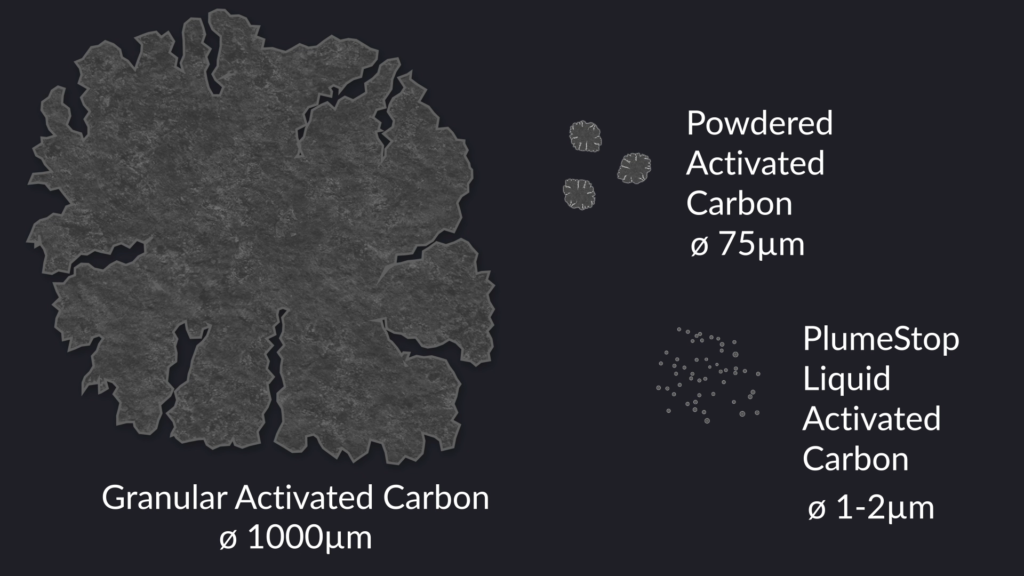A comparison of the distribution of:
Colloidal Activated Carbon (CAC) and Powdered Activated Carbon (PAC)
This video clip, taken from a REGENESIS’ R&D lab video, forms part of one of the early column studies that were undertaken to test PlumeStop’s ability to distribute in the subsurface. It shows that PlumeStop Colloidal Activated Carbon (CAC) flows easily through the pore spaces, coating the aquifer matrix in a thin layer of activated carbon. Good distribution is essential for successful in-situ remediation: it ensures the remediation product makes contact with the dissolved contaminant concentrations such as chlorinated solvents, pesticides or PFAS.
In comparison, the particles of Powdered activated carbon (PAC) clog the pore spaces and do not distribute well. Fracking is used by some to place PAC in the subsurface, but this will create preferential pathways, resulting in uneven distribution.
The key innovation with PlumeStop is that it is composed of very fine particles of activated carbon (1‐2μm) suspended in water through proprietary dispersion chemistry developed by the REGENESIS Research and Development department. This allows the technology to flow into the subsurface at low pressure and achieve consistent, reliable distribution – a capability unlike any other form of activated carbon used for groundwater remediation today.
To learn more, visit our PlumeStop products page which has links to technical bulletins and third-party academic articles.


 Americas
Americas Europe
Europe Français
Français Deutsch
Deutsch Italiano
Italiano Español
Español
